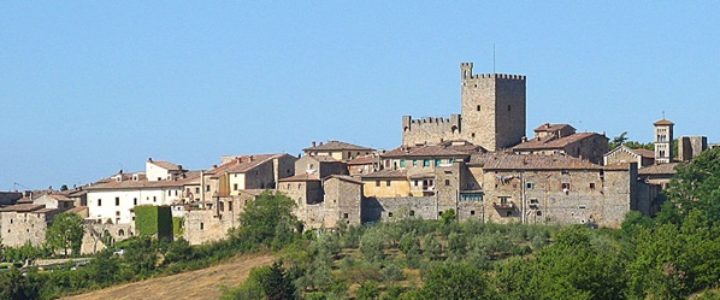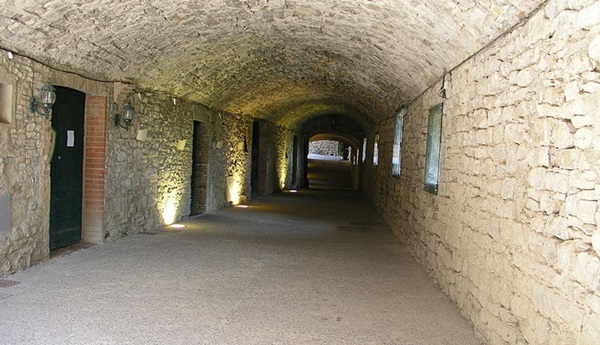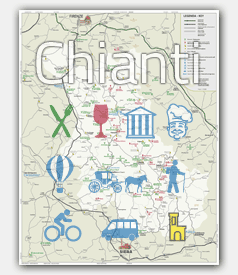
In the center of Castellina there is also the Archaeological Museum of the Sienese Chianti
In the XII century Castellina passed under the influence of Florence and in 1193 an agreement was signed between the lords of Treviso and Florence in that was granted to the Florentines to guard militarily the castles of Treviso and Castiglione (l’current Castellina). After the praise of Poggibonsi in 1203, an act in which the Chiantigiani borders between Florence and Siena are established, Castellina found itself to be one of the most important Florentine outposts since it was placed on the most direct road that put in communication the two rival cities.
In the fourteenth century Castellina became one of the cornerstones of the Chianti League, so much so as to be the head of one of the thirds in which it was divided. The Tertiary of Castellina administered the part of Chianti that slopes towards the Valdelsa. In 1397 it was plundered and entirely burnt by the troops of the Duke of Milan Gian galeazzo Visconti commanded by Alberrico by barbiano. In 1400 it was decided to fortify Castellina, and in the list of reformations preserved in the State Archives of Florence is written
«in loco qui dicitur la Castellina fiat fortilitia»
But the works had to proceed slowly so that in 1430 the workers of the Opera del Duomo were commissioned to fortify Castellina along with the Staggia Senese and Rèncine; to establish the type of necessary interventions and to make an estimate of the costs was sent Filippo Brunelleschi. In 1452 the walls of Castellina suffered the assault of Aragonese troops but resisted. Very differently things went in 1478 during the second Aragonese invasion of Chianti when Castellina was conquered by the Aragonese troops but resisted. Very different things went in 1478 during the second Aragonese invasion of the Chianti when Castellina was conquered by the Sienese and Neapolitan troops. On that occasion the defense of Castellina was personally directed by Giuliano da Sangallo while Francesco di Giorgio Martini was in charge of the besiegers. The occupation of Siena lasted until 1483 when it was resumed by the Florentines. In 1774, with the administrative reform of Grand Duke Pietro Leopoldo, Castellina became the seat of Community from which will derive the present municipality.
The historic centre of Castellina has been completely restored in recent years, thanks to the tourist boom linked to the Chianti Classico. The inhabited area, however, has rather modest architectural features even though they are of the late Renaissance palazzotti of greater value such as the Palazzo ugolini-squarcialupi and the Palazzo bianciardi
To mention Molino Nuovo (direction Greve), a characteristic historical village of the fifteenth century, where stands the tower of grignano belonged to the papacy.
Military architectures
- Rocca di Castellina in Chianti, massive building that stands on the main square with a tower of fourteenth-century crenellated from whose top you can admire a remarkable landscape chiantigiano. The fortress, from 21 April 2006, is the seat of the Archaeological Museum of the Sienese Chianti. The museum, realized using innovative technologies, presents the history of the ancient landscapes of the whole Chiantigiano territory, in addition to Castellina municipalities of Castelnuovo Berardenga, Gaiole in Chianti and Radda
- Walls of Castellina in Chianti: over the centuries they have been almost entirely demolished but still today it is possible to reconstruct the course and character of the fifteenth-century fortifications. The walls are still well recognizable on the north side, where the basement walkway, the present Via delle Volte, is well preserved, and on this part of the fortifications were placed the breaking towers for the flanking shot. Two doors were opened in the wall circuit: the Porta Senese and the Porta Fiorentina, the latter demolished after the Second World War because it was considered dangerous. The south side has completely disappeared but it is on this part of the walls that the Rock is located.
- Castle of Monternano




